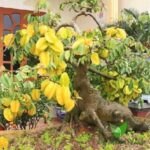At first glance, the Asiatic clam may not be aesthetically pleasing, with its hard and thick shell. However, this unassuming bivalve is a highly nutritious food source and a precious medicinal ingredient, often likened to “black gold” hidden within the mud.
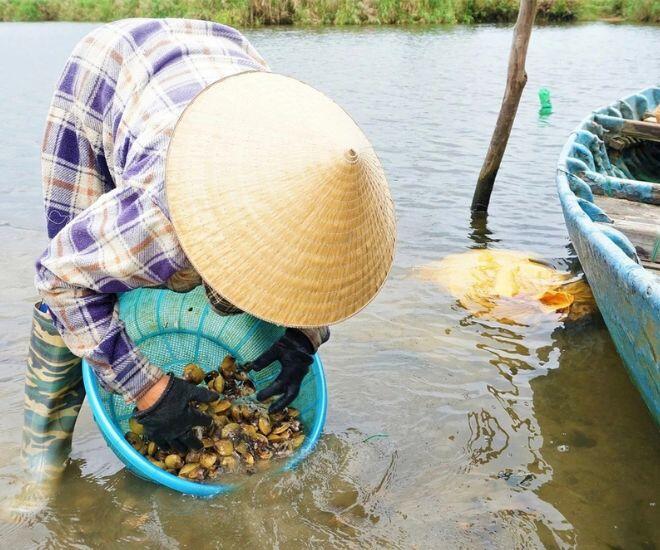
The art of clam digging is dependent on nature’s whims and does not occur year-round. The ideal time to hunt for these clams is during the dry season when the tide recedes, exposing the mudflats, or towards the end of the year when fields, ponds, and lakes begin to dry up. Along the tranquil Truong Giang River, which flows through Thang Binh district in Quang Nam province, locals venture into the mudflats around 6 am as the water recedes, searching for the small holes that indicate the Asiatic clam’s “winter hideout.”
For the children of An Ngai in Da Nang, clam digging is a thrilling pastime. With a simple reach into these narrow holes, they can capture plump and juicy clams. Asiatic clams belong to the family of clams, cockles, and scallops, primarily inhabiting the muddy depths of marshes, ponds, lakes, and canals. Their shells are smooth, ranging from greenish-black when young to grayish-black in adulthood. Despite their slow movement, propelled by a protruding tongue used for swimming, these clams are highly sensitive to sound. The slightest disturbance prompts them to clamp their shells shut and burrow deeper into the mud, requiring patience and dexterity from those seeking to harvest them.
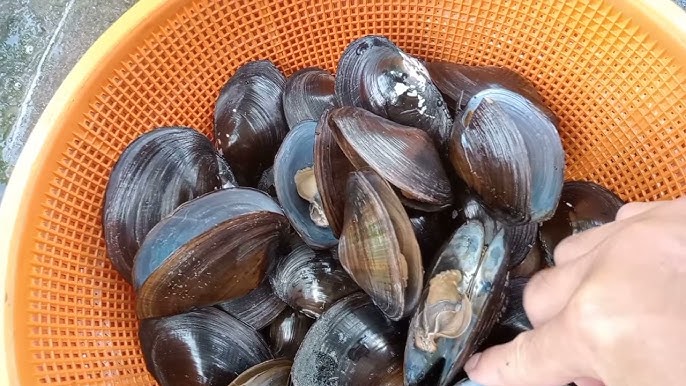
One of the most prolific sources of Asiatic clams is Bàu Nghè, a 50-hectare area in An Ngai Tay 2, Hoa Son, Hoa Vang district, Da Nang city. This region is considered the “capital” of Asiatic clams and apple snails, boasting an abundant supply that is unparalleled in the area. To maintain the freshness and quality of the clams, they must be kept alive after being caught. Clams with puffed-up, glossy shells are typically preferred by buyers as they tend to have more meat.
Prior to cooking, the clams undergo a meticulous cleaning process. Local people soak the clams overnight in rice water, allowing them to expel any mud and slime. The next step involves scrubbing off any remaining moss or mold from the shells before they are ready for culinary transformation. This careful preparation is the key to preserving the unique flavor of the clams while avoiding any unpleasant muddy tastes.
The humble Asiatic clam has inspired a diverse range of dishes that reflect the local culture. One of the most distinctive creations is steamed clam with lemon or ginger leaves. Each clam is first partially steamed until its shell slightly opens, after which a small piece of lemon or ginger leaf is skillfully inserted before steaming again until fully cooked. The result is a delightful fusion of the clam’s sweet and tender meat with the fragrant aroma of lemon or ginger. This dish is typically accompanied by chili-lime salt or the renowned Nam O fish sauce, enhancing its appeal.
Another mouthwatering option is the Asiatic clam stew. The clams are first parboiled and then mixed with spices such as chili, lemongrass, pepper, and oil, allowing the flavors to permeate every fiber of the meat. Some variations also include young shoots of a local herb, creating a truly distinctive flavor profile.
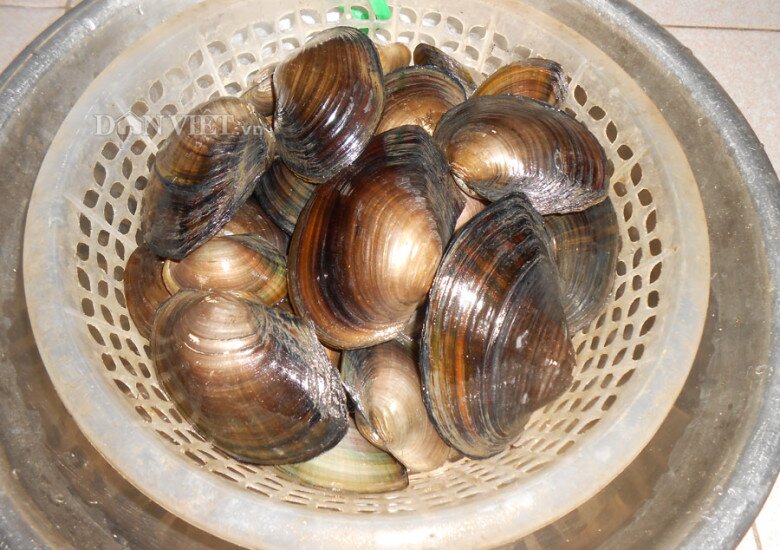
However, the most memorable dish is arguably the Asiatic clam porridge. The clam broth, made from boiling the clams, is used to cook rice or sticky rice until it reaches a soft and creamy consistency. The clam meat, carefully extracted after boiling, is then stir-fried with spices to create a flavorful filling. This meat is later added to the porridge, along with seasoning and spices. Served in a bowl and garnished with Vietnamese coriander, basil, and sliced chili, this porridge is a hearty, nutritious, and flavorful treat.
Another intricate dish is the Asiatic clam roll, a delicate fusion of minced clam meat, lean pork, wood ear mushrooms, pepper, peanuts, cellophane noodles, and eggs. This mixture is wrapped in banana leaves that have been slightly charred over a fire and then steamed. When served, the rolls are cut into square pieces and enjoyed with fresh herbs, star fruit, and green bananas, offering a unique and delectable experience. Additionally, Asiatic clams are used in soups with various vegetables like water spinach, lang spinach, or Malabar spinach, or stir-fried with lemongrass, chili, and turmeric, making them a familiar presence on family dinner tables.
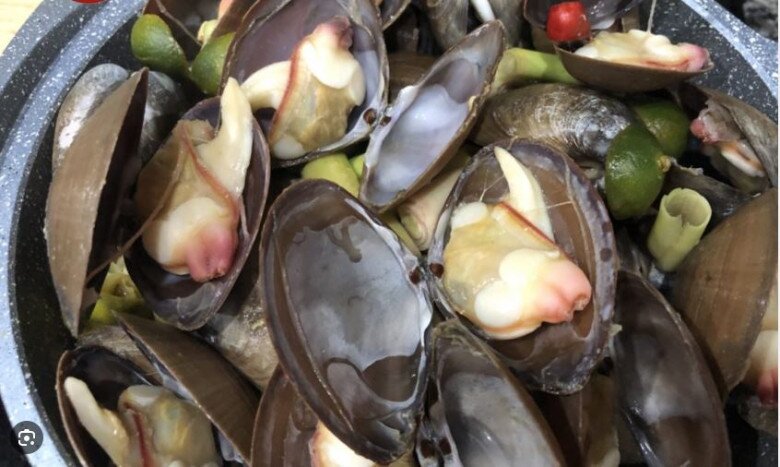
According to the elders, Asiatic clams possess cooling properties, which is why they are often paired with warming spices such as ginger, lemongrass, chili, and lemon leaves to create a harmonious balance. This combination not only enhances the flavor but also provides health benefits.
A visit to An Ngai offers more than just a chance to savor the delicious clam porridge; it also unveils a romantic tale of a local girl who was skilled in catching these clams. She would invite her suitor from the coastal region of Thanh Khe to enjoy the porridge she had prepared. It remains a mystery whether he fell in love with the girl or the porridge first, but they eventually married. Their love story is immortalized in a folk verse:
“Taste this bowl of Asiatic clam porridge,
Caught by my own hands in the deep pond
Asiatic clam porridge, a symbol of deep love
Fragrant, tasty, and a true delicacy of our homeland
If you ever feel the same way
I will follow you wherever you go…”
This folk verse not only celebrates the beauty of their love but also emphasizes the cultural significance and emotional connection that the Asiatic clam porridge represents. This humble delicacy not only nourishes the body but also nurtures the soul, becoming a symbol of love and a deep-rooted attachment to one’s homeland. Thus, the Asiatic clam is more than just a culinary specialty; it is a story, a cherished memory, and an integral part of the resilient and charming central region of Vietnam.
“Attract Wealth and Prosperity: The Ultimate Guide to Choosing the Perfect Feng Shui Plum Tree for Your Home”
The Feng Shui Carambola tree is a beautiful and auspicious addition to any home or garden. With its vibrant, lush foliage and unique fruit, this tree is believed to bring good fortune and prosperity to its owners. Not only is it aesthetically pleasing, but the Carambola tree also has a rich history in traditional medicine, with its leaves and fruit believed to possess healing properties.
The Market: A Source of Pride for the People of Ca Mau, Attracting 700 Visitors Daily, with Foreigners Falling in Love with Its Charms
Nestled on the Ganh Hao River’s lower reaches, Ca Mau floating market is a vibrant hub of agricultural trade and a unique cultural phenomenon in the Mekong Delta region of Southern Vietnam. Spontaneously emerging from the trading activities of boat-dwelling merchants, the market bustles with life from 2 AM to 6 AM daily, drawing hundreds of traders and increasingly attracting eco-tourists to this southernmost tip of the country.




























